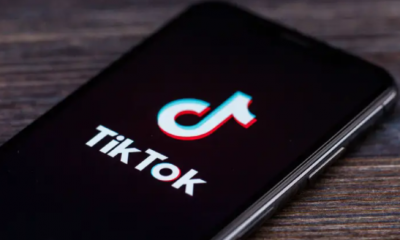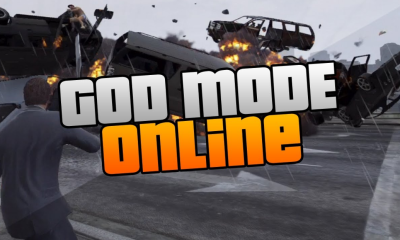Technology
How emojis, avatars and bitmojis have overtaken photographs in expressing emotion.
We celebrated the World Photography Day 2021 on 19 August toasting to the beauty of capturing emotions. Conversation media has become a lovely part of our lives and something that brings us all together. Aren’t you fascinated by the notion of capturing a reaction, a moment in time?
We all are! With developing technology, a new medium, something other than our photos, has gained popular acceptance. This is for expressing ourselves on the Internet and social media more eloquently and creatively.
We’ve all heard of the term ’emoji.’ Emojis come to our rescue whenever we want to communicate. Be it about joy, grief, love, or humour. Did you ever prefer to send a disappointed “shaking your head” emoji than snapping your own facial reaction and forwarding it to your friend on his stupid joke?
Emojis are used by 92 percent of the online population on a daily basis. Every day, about 10 billion emojis are sent. Every day, more than 900 million emoticons are sent over Facebook Messenger alone.
Emojis make you more likeable, according to 78 percent of social media users. When you look at such statistics, it becomes instantly clear about the impact emojis have had on our daily lives. Also, why expressing you through these digital faces has become a trend today!
Visual media has already replaced photos and selfies online
~In the United States, Facebook recently unveiled Avatars, its spin on Bitmoji. This feature allows users to create a customised Avatar, or emoji, of themselves. It can then be used on stickers that can be shared in Facebook comments, Stories, and other places.
It’s even suitable for use as a temporary profile image. Ever thought we would use emojis as our profiles instead of selfies?
~Memoji, as the “emoji” suffix suggests, are Apple’s attempt to create a more personalized form of emoji. This is a synthesis of Bitmoji (a Snapchat-owned product) and Apple’s earlier “Animoji” (a mashup of “animated emoji”) feature.
Memoji, like Bitmoji, allows users to make personalised avatars of themselves, but with faces that are animated in real-time, similar to its Animoji.
~Samsung also has its own AR Emoji, which creates an animated digital representation of a user’s face. After the character has been formed, the user can record facial emotions and watch them animate on screen.
Its unique feature is that any face the user selects will be fully animated, copying all expressions and movements in real time.
The front camera captures a photo of the user’s face. The image is then analyzed and a digital version is created, which is displayed on the screen. You could have used the photo itself, but then where is the fun and the thrill in that?
~MojiPop software transforms the user’s face into a hand-drawn cartoon. It further applies it to a variety of sceneries and stickers. What if you were on top of the world, dancing, or even inside a painting? MojiPop makes it possible.
In times of social isolation, one can use these digital versions of themselves to be socially productive. These memojis and avatars allow users to create a lookalike version of them to express themselves and amuse friends on the internet.
Communicating through and identifying more with emojis and avatars than our own pictures
~As these digital caricatures of ourselves and our friends become an inextricable part of our culture. We will identify with them for years, if not decades. As this becomes our reality, it’s worth considering why our society is so fixated with these cartoonish representations of ourselves.
What do they think of our culture? We’ve even reached the point where we lament that our mini-me is cooler than our actual self.
Our emoji obsession may be viewed as a creative outlet. Emoji, like images, movies, and other forms of self-presentation, can be considered a self-presentational behaviour. This enables us to present our “best selves” to others.
Self-presentational behaviour is a word used in social psychology to describe people’s desire to control or mould how others perceive them. The notion behind self-presentational conduct is that it allows people to disguise their defects more effectively.
~In a hyper-connected society, emojis, avatars, bitmojis, and other types of visual shorthand are assisting us in expressing emotions. They are opening up to one another in a light-hearted and less intimidating way.
They offer a level of intimacy to traditional speech and writing. They do it by infusing nuance and personality, allowing us to interact in a more unrestrained and unique manner. Isn’t it exciting that we could be communicating with our friends through our animated versions?
The idea of an emoji-meme world besides our own real selves sounds nice and aesthetically pleasing, no?
~We live in a world where people are willing to try new things without reservations. Almost 10 billion emojis are exchanged online every day. They are widely popular because they are incredibly amusing.
~We live in the selfie era, yet taking a good selfie can require a lot of time and work. Cartoon avatars, on the other hand, are a different story. It’s only a matter of a few clicks to get the right appearance.
Our curly hair, thick eyebrows, and huge noses, which we may despise in real life, can become badges of glory. After all, frizzy hair in cartoon form is adorable, not irritating.
“You have to represent yourself in a selfie in a certain way. Because you have a look, you have pals, and you’re having a moment. “Getting the selfie right is mission critical,” says Beth Coleman, author of Hello, Avatar, a book about online identity. “With Memoji, we can be completely carefree. It’s as if we have a tiny companion, a mini-me, or a twin, and there’s no pressure.”
Future scope
Avatars in cartoon form have gone a long way. They can use augmented reality to play copycat and be integrated into real-world surroundings on our screens.
Emojis have just replaced photos till now. But, in the not-too-distant future, our cartoon twins may appear in hologram form. They could be in our friends’ living rooms on our behalf, small ambassadors dispatched in our place!
And that just might happen sooner than expected, considering the forward momentum today.
Wit plays a big role in online and text communication. We always want the right response, but we’re not always creative and facially expressive enough to do it ourselves. We require assistance. And so we happily, go to the one thing that’s skilled and cool enough: Emoji!
















